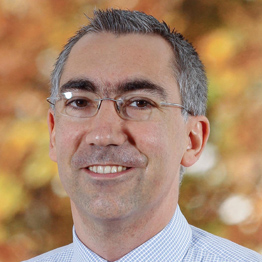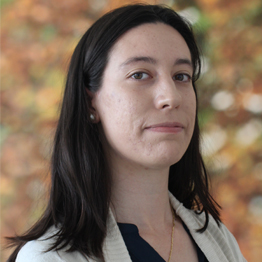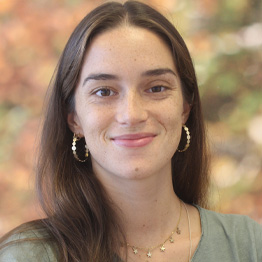Thermal and Fluids
Our researchers tell you
what they are working on

.
.

The group of Iermal and Fluid Engineering focuses on the modeling and analysis of systems, processes and products involving fluid flows (with or without thermal phenomena). To this end, CFD (Computational Fluid Dynamics) modeling and experimental techniques are used to develop new designs, improve and optimize current ones and develop simulation, design and analysis tools oriented to Username.
Its lines of research are as follows:
![]() Thermal and Fluid Machines and Processes. Mathematical modeling and simulation by Computational Fluid Dynamics (CFD) of flow and heat transfer in all subject of industrial equipment: turbomachines, water meters, valves, etc. Mathematical modeling in concentrated parameters. Experimental obtaining of operating parameters. Analysis and optimization of design.
Thermal and Fluid Machines and Processes. Mathematical modeling and simulation by Computational Fluid Dynamics (CFD) of flow and heat transfer in all subject of industrial equipment: turbomachines, water meters, valves, etc. Mathematical modeling in concentrated parameters. Experimental obtaining of operating parameters. Analysis and optimization of design.
![]() Multiphase flows. Mathematical modeling, simulation, experimental analysis and optimization of: Atomization systems: mechanisms of sheet breakage and training of droplets. Melt-blown systems: high velocity air flow, training and dynamics of polymer fibers. Wastewater treatment processes: Reactor aeration and flotation systems using microbubbles (DAF).
Multiphase flows. Mathematical modeling, simulation, experimental analysis and optimization of: Atomization systems: mechanisms of sheet breakage and training of droplets. Melt-blown systems: high velocity air flow, training and dynamics of polymer fibers. Wastewater treatment processes: Reactor aeration and flotation systems using microbubbles (DAF).
![]() Ventilation, Air Conditioning and Refrigeration. Mathematical modeling, simulation, experimental analysis and optimization of: ventilation and air conditioning processes of enclosures by free and forced convection. Cooling of power transformation systems. Cooling of electronic components. Cooling of electrical machines.
Ventilation, Air Conditioning and Refrigeration. Mathematical modeling, simulation, experimental analysis and optimization of: ventilation and air conditioning processes of enclosures by free and forced convection. Cooling of power transformation systems. Cooling of electronic components. Cooling of electrical machines.
![]() Biofluidics. Mathematical modeling, simulation, experimental analysis and optimization in the field of Biofluidics. Fluid-mechanical analysis in arteries (abdominal aorta, hepatic artery...): experimental and numerical study of flow patterns and pressures. research of the relationship between Fluid Mechanics and training of thrombus and aneurysms. Hepatic radioembolization: study of the influence of fluid-mechanical and geometrical parameters in the targeting of hepatic tumors and design of catheters.
Biofluidics. Mathematical modeling, simulation, experimental analysis and optimization in the field of Biofluidics. Fluid-mechanical analysis in arteries (abdominal aorta, hepatic artery...): experimental and numerical study of flow patterns and pressures. research of the relationship between Fluid Mechanics and training of thrombus and aneurysms. Hepatic radioembolization: study of the influence of fluid-mechanical and geometrical parameters in the targeting of hepatic tumors and design of catheters.
 Members of the group
Members of the group
Alejandro Rivas Nieto
Full Professor
(coordinator)
+34 943 219877 Extension: 842433
View CV "View Alejandro Rivas Nieto's CV".Raúl Antón Remírez
Full Professor
+34 943 219877 Extension: 842412
View CV "View Raúl Antón Remírez's CV".Tomás Gómez-Acebo Temes
Full Professor
+34 943 219877 Extension: 842230
View CV "View CV of Tomás Gómez-Acebo Temes".Juan Carlos Ramos González
Full Professor
+34 943 219877 Extension: 842434
View CV "View Juan Carlos Ramos Gonzalez's CV".Gorka Sánchez Larraona
Associate Professor
+34 943 219877 Extension: 842578
See CV "See Gorka Sánchez Larraona's CV".Jorge Aramburu Montenegro
Associate Professor
+34 943 219877 Extension: 842593
View CV "View Jorge Aramburu Montenegro's CV".Marta Gutiérrez de San Miguel de Paz
PhD Student
+34 943 219877 Extension: 842502
Juan Ignacio Villarón Baz
Technician of laboratory and workshop
+34 943 219877 Extension: 842530
The main equipment of area is as follows:
![]() 6 HP Proliant DLXXX Computing Servers (various models). From 48 processors and 64 GB of report RAM to 80 processors and 128 GB of report RAM.
6 HP Proliant DLXXX Computing Servers (various models). From 48 processors and 64 GB of report RAM to 80 processors and 128 GB of report RAM.
![]()
 A PHOTRON FASTCAM MiniAX 200 high-speed camera. Up to 900 Kfps; 6400 fps full frame (1024x1024).
A PHOTRON FASTCAM MiniAX 200 high-speed camera. Up to 900 Kfps; 6400 fps full frame (1024x1024).
![]()
 A Redlake MotionXtra HG 100-K/LE high-speed camera capable of 100,000 frames per second
A Redlake MotionXtra HG 100-K/LE high-speed camera capable of 100,000 frames per second
![]()
 A ThermaCam P25 thermal imaging camera with package from Flir Systems research
A ThermaCam P25 thermal imaging camera with package from Flir Systems research
![]()
 GSV (Global Size Velocimetry) Optoelectronic Fluid Dynamics Image Analysis System extended to perform stereoscopic PIV (Particle Image Velocimetry) and LIF (Laser Induced Fluorescence) from TSI. This system is used to measure velocity and temperature distributions in fluid flows and velocity and particle size distributions in atomized flows.
GSV (Global Size Velocimetry) Optoelectronic Fluid Dynamics Image Analysis System extended to perform stereoscopic PIV (Particle Image Velocimetry) and LIF (Laser Induced Fluorescence) from TSI. This system is used to measure velocity and temperature distributions in fluid flows and velocity and particle size distributions in atomized flows.
![]()
 A CTA model Streamline hot wire anemometry system with two channels and a 3D translation system from Dantec Dynamics.
A CTA model Streamline hot wire anemometry system with two channels and a 3D translation system from Dantec Dynamics.
![]()
 A long-distance Video Lens K2 Single Zoom microscope lens from Edmund Optics
A long-distance Video Lens K2 Single Zoom microscope lens from Edmund Optics
![]()
 One cold light system two 250 W HMI spotlights subject PAR
One cold light system two 250 W HMI spotlights subject PAR
![]()
 1 GSVITEC MultiLED G8 Set 320 W LED lighting system
1 GSVITEC MultiLED G8 Set 320 W LED lighting system
The software available is as follows:
![]() ANSYS CFD: 1 licence Associate, 25 Research licenses and 240 HPC licenses.
ANSYS CFD: 1 licence Associate, 25 Research licenses and 240 HPC licenses.
![]() TRNsys.
TRNsys.
![]() Dymola.
Dymola.
![]() Matlab-Simulink.
Matlab-Simulink.
![]() EES.
EES.
The students have several laboratories where they can carry out their practical work:
![]() laboratory of Fluid Mechanics
laboratory of Fluid Mechanics
![]() laboratory Heat Transfer
laboratory Heat Transfer
![]() laboratory of Pneumatics and Oleohydraulics
laboratory of Pneumatics and Oleohydraulics
 Latest highlighted projects
Latest highlighted projects 
project MODITRANS - Modeling and Diagnosis of Transformers
Funding:
CPP2021-008580
project financed by MCIN/AEI/10.13039/501100011033
and by the European Union-NextGenerationEU/PRTR.
group Thermal and Fluids

Participants in the project Ormazabal Cotradis Transformadores (coordinator of the proposal), Centro de programs of study e Investigaciones Técnicas, Mondragon Goi Eskola Politeknikoa and the School of Engineering of the University of Navarra.
Objectives:
![]() New distribution transformer designs for public/private distribution and photovoltaic applications.
New distribution transformer designs for public/private distribution and photovoltaic applications.
![]() New sensors that enable on-line determination of the dielectric oil quality.
New sensors that enable on-line determination of the dielectric oil quality.
![]() New system designs to minimize the transformer connection current, avoiding voltage dips during connection in weak networks that could cause the protections to trip.
New system designs to minimize the transformer connection current, avoiding voltage dips during connection in weak networks that could cause the protections to trip.
![]() development of a methodology for the determination of the health index of transformers.
development of a methodology for the determination of the health index of transformers.
|
|
|
SISIVO: Hot Melt Adhesive Application Systems
Funding:
RTC-2019-007057-7
project funded by
MCIN/AEI/10.13039/501100011033
group Thermal and Fluids















